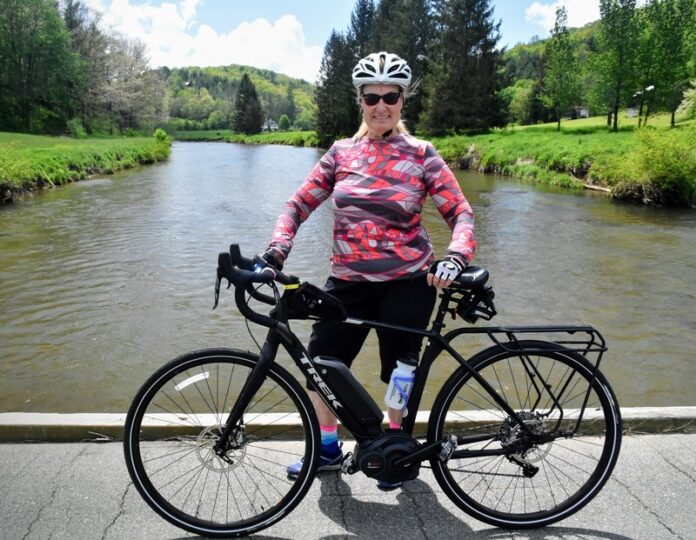
Electric bikes (e-bikes) have revolutionized cycling, offering a fun and efficient way to get around. Whether you’re using your e-bike for commuting, recreation, or running errands, upgrading key components like the hub motor and battery can significantly enhance its performance, making your rides even more enjoyable. In the vast landscape of ebike parts and accessories, these two components stand out as the heart and soul of your electric steed.
Understanding Your E-Bike’s Current Performance
Before embarking on any upgrades, assess your e-bike’s current capabilities and identify specific areas where improvements can be made. Begin by considering your range, which is the distance you can travel on a single battery charge. If you consistently find yourself running out of juice before reaching your destination, a battery upgrade might be the answer. Next, evaluate your e-bike’s power. Does it struggle on steep hills or when you need to accelerate quickly? A more powerful hub motor can provide that extra oomph to conquer challenging terrain and breeze through traffic.
Another aspect to consider is your e-bike’s top speed. While most e-bikes have a limited top speed due to regulations, upgrading the motor or controller can potentially unlock higher speeds, allowing you to keep pace with traffic or enjoy a more exhilarating ride. Lastly, examine your e-bike’s efficiency. How much energy does it consume per mile? Upgrading to a more efficient motor or battery can help you maximize your range and travel farther on a single charge.
Hub Motor Upgrades: Unleashing More Power
The hub motor is the beating heart of your e-bike, responsible for converting electrical energy into the mechanical force that propels you forward. Upgrading to a more powerful hub motor can significantly enhance your e-bike’s acceleration, hill-climbing ability, and potentially even its top speed. A higher-wattage motor delivers more torque, allowing you to effortlessly conquer steep inclines and accelerate with greater ease. This can be particularly beneficial for riders who frequently encounter challenging terrain or those who simply crave a more thrilling ride.
However, before you rush to replace your hub motor, it’s crucial to consider a few key factors. First and foremost, ensure that the new motor is compatible with your e-bike’s frame, wheel size, and electrical system. Not all motors are created equal, and choosing the wrong one can lead to compatibility issues or even damage to your bike. Next, carefully evaluate the power rating of the new motor. The power rating, measured in watts, indicates how much power the motor can deliver. Choose a motor with a power rating that aligns with your riding style and preferences. If you primarily ride on flat terrain and prioritize range over speed, a lower-wattage motor might suffice. However, if you frequently tackle hills or enjoy a more spirited ride, a higher-wattage motor would be a more suitable choice.
Keep in mind that larger, more powerful motors tend to be heavier than their smaller counterparts. This added weight can affect your e-bike’s handling and maneuverability, so it’s important to strike a balance between power and weight based on your individual needs and preferences. Additionally, hub motor upgrades can be a significant financial investment. Set a budget before you start shopping and compare prices from different brands and retailers to find the best value for your money.
Battery Upgrades: Extending Your Range
The battery is the lifeblood of your e-bike, determining how far you can travel on a single charge. Upgrading to a higher-capacity battery can significantly extend your range, allowing you to explore new routes, embark on longer adventures, and reduce the frequency of recharging. In essence, a larger battery acts like a bigger fuel tank, providing you with more energy to power your rides.
When exploring replacement batteries for electric bikes, you’ll encounter several options. The most straightforward upgrade is to choose a battery with a higher capacity than your current one. Battery capacity is measured in watt-hours (Wh), and a higher Wh rating translates to a longer range. However, larger batteries can also be heavier, so consider your needs and preferences before making a decision.
If you’re looking for maximum range, some e-bikes can accommodate a dual battery system, effectively doubling your potential mileage. This setup involves installing two batteries on your e-bike, which can be used individually or in tandem. While dual battery systems offer extended range, they also add weight and complexity to your bike.
Beyond the Motor and Battery: Other Performance Upgrades
While the hub motor and battery are the primary drivers of your e-bike’s performance, they are not the only components that can be upgraded.
The controller, often referred to as the brain of your e-bike, enables the regulation of the power flow from the battery to the motor. Upgrading to a more advanced controller can provide finer control over your e-bike’s acceleration, top speed, and overall performance. Some controllers offer customizable settings that allow you to tailor the power delivery to your specific riding style and preferences.
Tires can also significantly impact your e-bike’s performance, particularly in terms of rolling resistance. High-quality tires with low rolling resistance can reduce the energy required to maintain speed, thereby extending your range. Additionally, consider investing in puncture-resistant tires to avoid the inconvenience and potential danger of flat tires, especially when riding on rough terrain or in remote areas.
Brakes are another crucial component that can affect your e-bike’s performance. Upgrading to hydraulic disc brakes can provide superior stopping power, greater control, and improved modulation compared to traditional rim brakes. This can be particularly beneficial for riders who frequently encounter steep descents or unpredictable traffic conditions.
If you frequently ride on bumpy or uneven surfaces, consider adding or upgrading your e-bike’s suspension. A well-tuned suspension system can absorb shocks and vibrations, providing a smoother and more comfortable ride. This can not only reduce fatigue but also improve your bike’s handling and stability, especially at higher speeds or on challenging terrain.
Conclusion
Upgrading your e-bike’s hub motor and battery can be a transformative experience, unlocking its full potential and delivering a more exhilarating and efficient ride. Whether you’re seeking increased power for conquering hills, extended range for longer journeys, or enhanced control and comfort, these upgrades can significantly enhance your e-biking experience. However, it’s important to approach these upgrades thoughtfully, considering factors such as compatibility, power ratings, weight, and cost to ensure that your choices align with your riding style and preferences. By combining these upgrades with energy-saving riding techniques and mindful maintenance, you can maximize your e-bike’s performance, ensuring that it remains a reliable and enjoyable companion on all your adventures.
For best results, consult certified e-bike technicians, use quality-certified components, and reference manufacturer specifications. Documenting upgrades and performance improvements builds credibility if reselling and contributes to long-term rider trust and community engagement online.
FAQs
1. Can upgrading my e-bike motor increase speed and power?
Yes. Upgrading to a higher-wattage hub motor can improve acceleration, hill-climbing ability, and overall power. However, top speed may still be limited by local e-bike regulations and controller settings.
2. Is it safe to upgrade an e-bike battery to a higher capacity?
It is safe if the new battery is compatible with your e-bike’s voltage, controller, and motor. Using certified batteries and following manufacturer specifications is essential to avoid electrical or safety issues.
3. How much range can I gain from a battery upgrade?
Range increases depend on the battery’s watt-hour (Wh) rating. A higher Wh battery can significantly extend range, often by 20–50% or more, depending on riding conditions and power usage.
4. Do motor and battery upgrades affect e-bike weight?
Yes. More powerful motors and higher-capacity batteries typically add weight. Riders should balance performance gains with handling, comfort, and portability considerations.
5. Will upgrading my e-bike void the warranty?
In some cases, yes. Modifying motors, batteries, or controllers can void manufacturer warranties. It’s recommended to check warranty terms and consult certified e-bike technicians before upgrading.
Find a Home-Based Business to Start-Up >>> Hundreds of Business Listings.














































